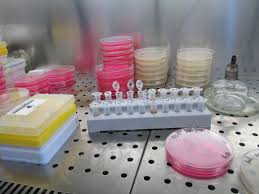
Surgeries for spinal fusion Baltimore MD have made the lives of many patients easier and fuller. This is important because there are many reasons why an individual’s spine may become unstable as they age. Some folks are born with genetic disorders like scoliosis that make their spines develop in an s-curve or a c-curve instead of a straight line. Literally no one is safe from a life-changing accident that could occur on any day at any point in time. Similarly, everyone has the experience of aging. All of the body’s tissues lose moisture and elasticity over time, sometimes creating an unstable spine as a result. Les frequently, a vertebrae, which is one of the small bones that makes up the solid part of the spinal column, will simply slip forward from its proper place for, apparently, no reason at all. Any of these conditions or events can create limitations that decrease the quality of an individual’s life due to an unstable spine.
Bone Grafts and Spinal Fusion Surgery
One of the major components of a spinal fusion surgery Baltimore has always been the need for bone grafting tissue. Until the present time, surgeons have used donor tissue from the patient’s own body, called an autograft, or donor tissue from a cadaver, called an allograft. Both of these types of bone grafting had both good and bad points. More recently, however, it has become possible for scientists to grow donor bone tissue in a laboratory.
This scientific advance has been pioneered in Israel and has only been written about since February of 2018. It is being used to help people who have severe bone fractures that make it literally impossible for doctors to put all of the pieces back together correctly. In the past, synthetic “bone” might have been used to fill in a gap, if needed. Now, it seems it is possible to grow biologically compatible bone grafting material in a laboratory using only some fat cells from the patient. This scientific advance clearly has many wonderful applications, including application to the spinal fusion procedure. Patients would no longer have to choose between a painful autograft and a more risky and scarce allograft.